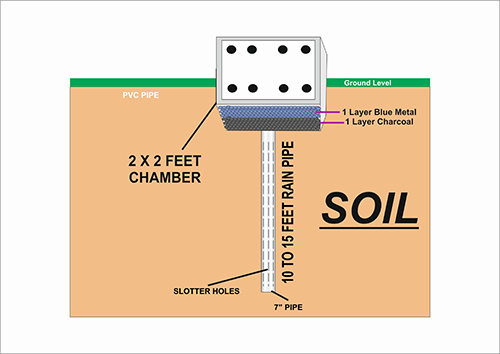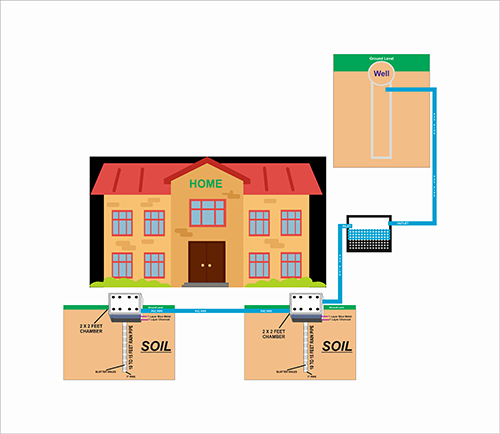Services
- Home
- Services




COMPONENTS OF A RAINWATER HARVESTING SYSTEM
A rainwater harvesting system comprises components of various stages - transporting rainwater through pipes or drains, filtration, and storage in tanks for reuse or recharge. The common components of a rainwater harvesting system involved in these stages are illustrated here. The catchment of a water harvesting system is the surface which directly receives the rainfall and provides water to the system. It can be a paved area like a terrace or courtyard of a building, or an unpaved area like a lawn or open ground. A roof made of reinforced cement concrete (RCC), galvanised iron or corrugated sheets can also be used for water harvesting.
at the roof to prevent the passage of debris
Channels all around the edge of a sloping roof to
collect and transport rainwater to the storage tank.
Gutters can be semi-circular or rectangular and could be made using: Conduits are pipelines or drains that carry rainwater from the catchment or rooftop area to the harvesting system. Conduits can be of any material like polyvinyl
chloride (PVC) or galvanized iron (GI), materials that are commonly available. The filter is used to remove suspended pollutants from rainwater collected over roof. A filter unit is a
chamber filled with filtering media such as fibre, coarse sand and gravel
layers to remove debris and dirt from water before it enters the storage
tank or recharge structure. Charcoal can be added for additional filtration There are various options available for the construction
of these tanks with respect to the shape, size and the material of construction. Rainwater may be charged into the groundwater aquifers through any suitable structures like dugwells, borewells, recharge trenches and recharge pits.
Various recharge structures are possible - some which promote the percolation of water through soil strata at shallower depth (e.g., recharge trenches, permeable pavements) whereas others conduct water to greater depths from where it joins the groundwater (e.g. recharge wells). At many locations, existing structures like wells, pits and tanks can be modified as recharge structures, eliminating the need to construct any structures afresh
Catchments
Coarse mesh
Gutters
Conduits
Filter
Storage facility
Recharge structures















